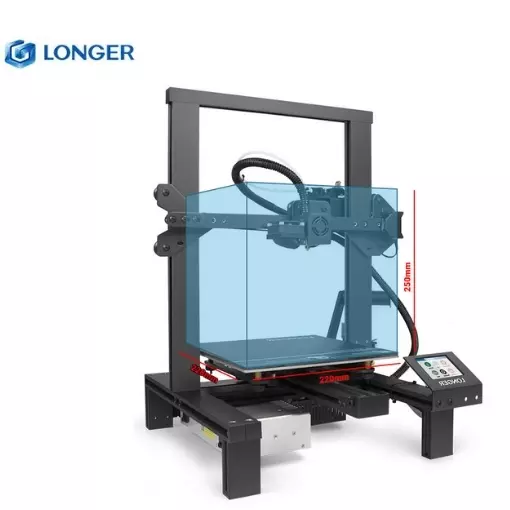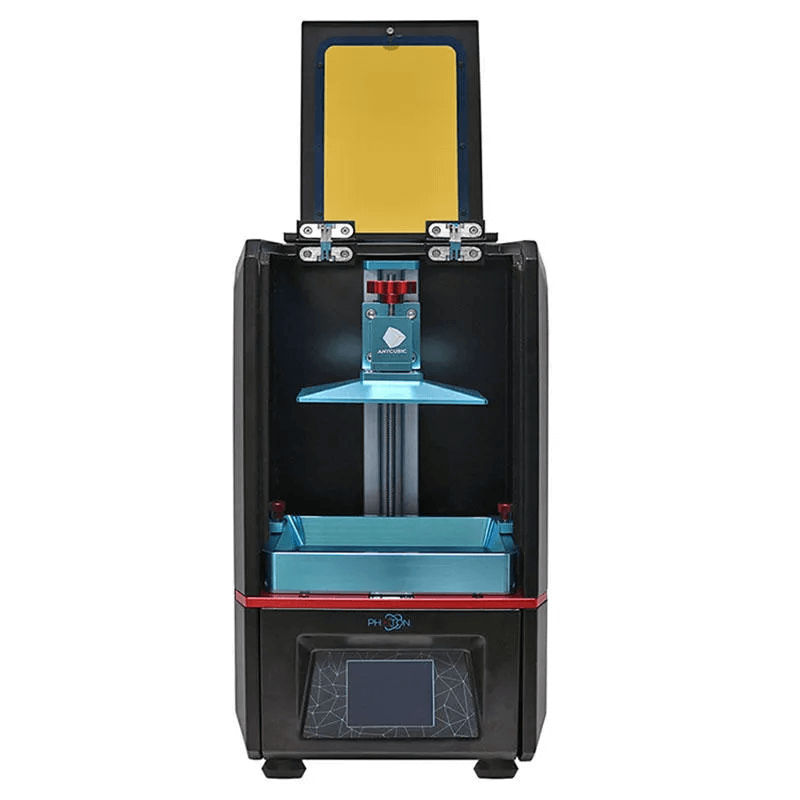Compare LK4 vs Photon
Comparison between the best 3D printers
Choose the best 3D printer at the best price. The cheapest 3D printers are here.
Buy a 3D printer here with 3D Fila.
 |
 |
|
| Model | LK4 |
Photon |
| Printing Material | Filament | Resin |
| Buy Filament for Longer 3D LK4 | Buy Resin forAnycubic Photon | |
| Estimated price | $200,00 | $100,00 |
| Manufacturer | Longer 3D | Anycubic |
| Release Year | 2019 | 2019 |
| Print Volume [mm] | 220x220x250 | 65x115x155 |
| Printer Size [mm] | 402x425x505 | 220x200x400 |
| Weight [kg] | 7,8 | 7,2 |
| Power Loss Recovery | YES | NO |
| Maximum Resolution [mm] | 0,1 | |
| Processor | 8 bits | |
| Display | Touchscreen TFT 2,8'' | Touchscreen TFT 3,5'' |
| Power Supply | 12V / 360W | 40W |
| Connectivity | SD / USB | USB |
| Operating systems | Windows, Mac, Linux | Windows, Mac, Linux |
| Date of registration in the system | 2021-04-15 | 2021-04-15 |
| Release date | 2019 | 2019 |
| Extra features | The Longer LK4 is a versatile 3D printer capable of working with a wide range of filaments, such as PLA, ABS, TPU, copper, wood and carbon fiber, thanks to its 0.4mm nozzle and heated bed up to 110°C. With a printing accuracy of between 0.05-0.4mm, it stands out for its solid construction with an aluminum frame, weighing around 7kg, and a robust 24V and 15A power supply. The kit includes an Allen key, a 7/10 key, a microSD card with USB adapter, a spatula, cable ties, a power cable, 5m of filament and a spare filament end sensor. Assembly is simplified, with around 90% of the equipment pre-assembled, and detailed instructions assist in the process. Special features include print recovery after power failure, a filament end sensor, a super-adhesive printing surface and an intuitive color touchscreen display. The design features smooth profiles for easy assembly, and the position of the filament holder optimizes the filament path to the extruder. The LK4 is a solid choice for 3D printing enthusiasts looking for quality and versatility. | The Anycubic Photon DLP is a resin 3D printer that stands out for its affordability and quality. It uses DLP (Digital Light Processing) technology to cure resin layers with precision, offering resolution of 25-100 microns. Its build volume is 115 x 65 x 155 mm, suitable for modest-sized projects. It includes a 2.8-inch touchscreen, USB and SD card connectivity, and a carbon filter to mitigate odors. It is notable for generating efficient support structures through its custom slicing software. Although it requires care in resin handling and post-processing, it is an excellent option for beginners and professionals who want to explore resin 3D printing with high resolution and ease of use. |
| Support for multiple colors and materials (AMS and CFS) | NO | NO |
Notes * |
||
| Cost-benefit | 7 / 10 | 6 / 10 |
| Hardware | 2 / 10 | 0 / 10 |
| Tela | . | . |
| Print volume | 3 / 10 | 3 / 10 |
| Performance | 1 / 10 | 0 / 10 |
Conclusion |
| In conclusion, when comparing the Longer LK4 and the Anycubic Photon, both 3D printers offer distinct advantages that cater to different user needs and projects. The LK4, with its larger print volume and versatility in filament compatibility, stands out as a robust option for those who require a general-purpose printer capable of handling a variety of materials. Its features, such as power loss recovery and a user-friendly touchscreen, enhance its usability, making it suitable for both beginners and enthusiasts who value ease of use and reliability. In contrast, the Anycubic Photon is tailored for users specifically interested in resin printing. Although it offers a smaller build volume, its high resolution and precision capabilities make it an excellent choice for projects requiring detailed finishes. The Photon is particularly appealing for users looking to experiment with resin prints, despite the careful handling requirements and additional post-processing steps. Considering the price points, the LK4 provides better overall value for those seeking a versatile printer suitable for a wide range of applications. Meanwhile, the Photon is a noteworthy option for those focused solely on high-resolution resin printing and willing to manage the intricacies of that process. Ultimately, the best choice will depend on the user’s specific needs—whether prioritizing versatility and ease of use or aiming for high-quality, detailed resin prints. |

